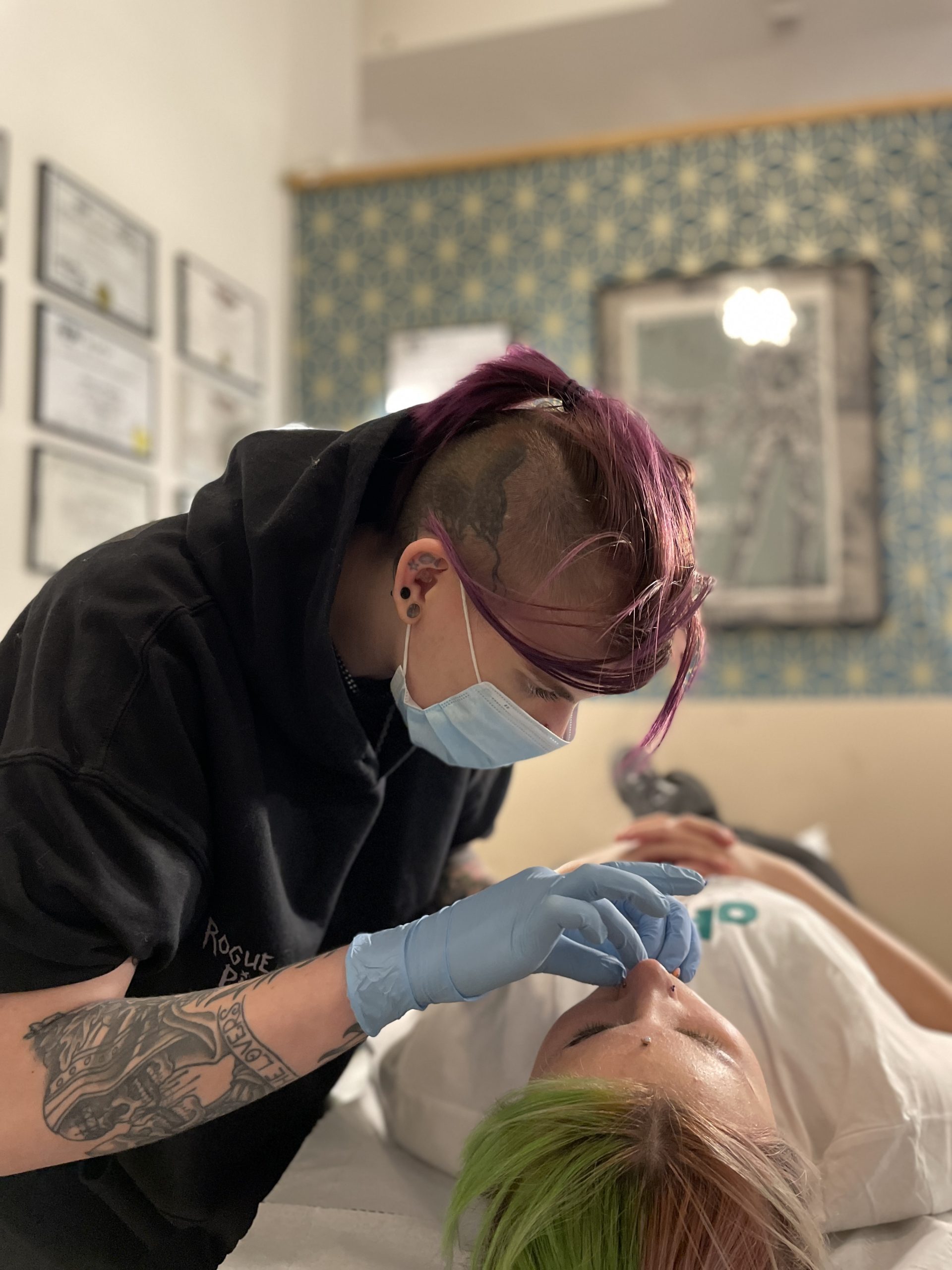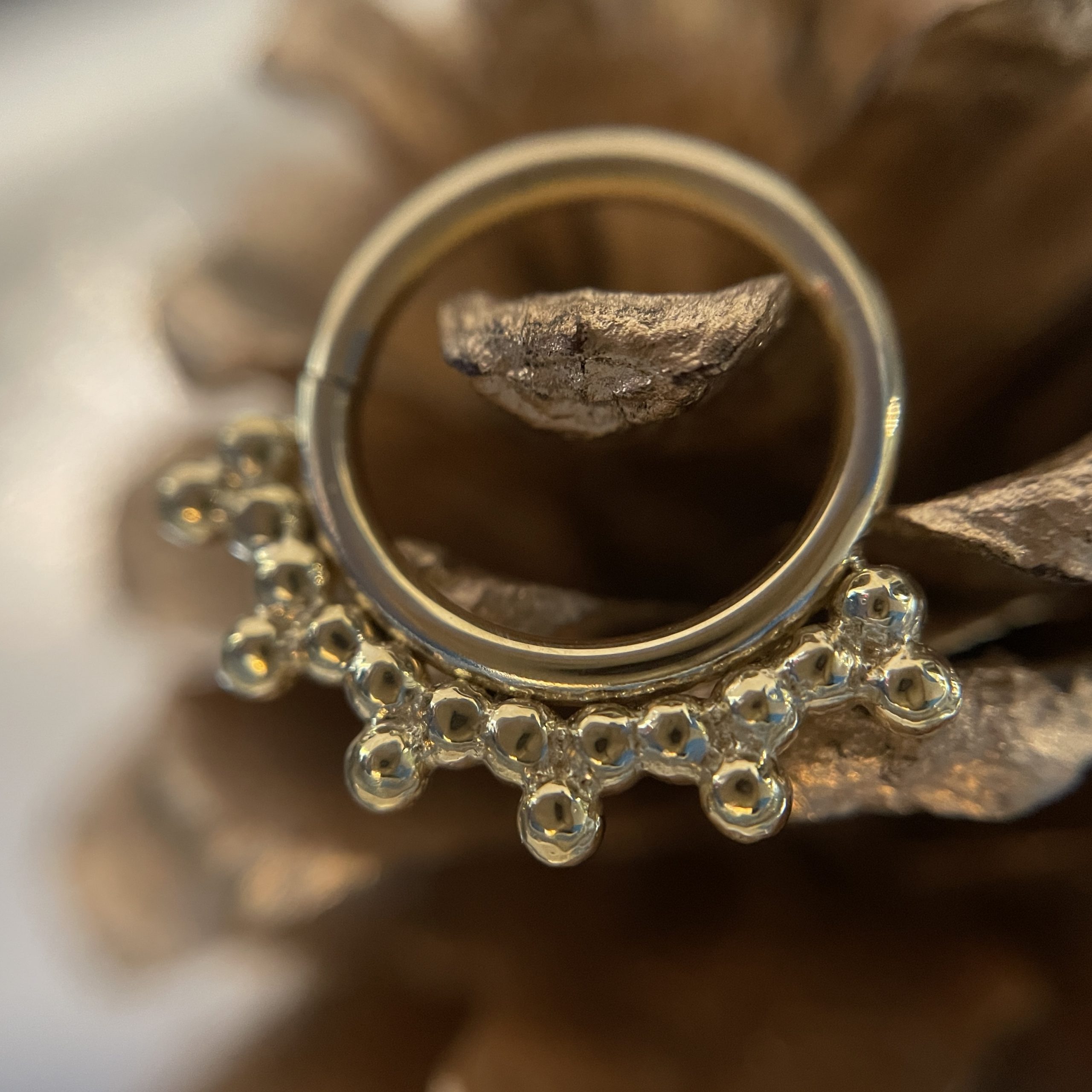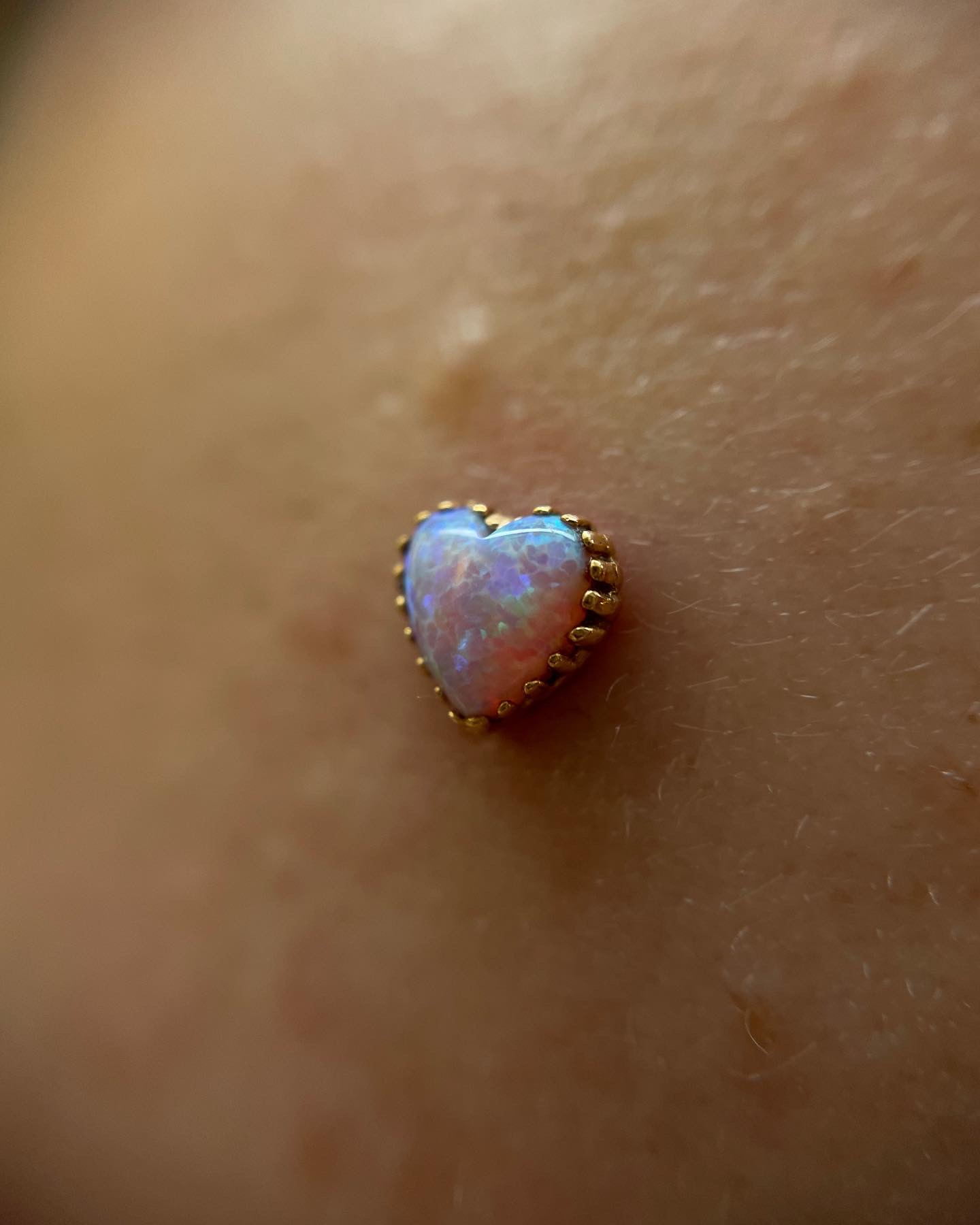The most important part of a piercing, aside from the jewellery quality and skill of your practitioner, is the use of an aseptic technique. You may read that and think – Well, what is an aseptic technique? How do I know my practitioner is using one? This post will form an overview of what asepsis is, and how different techniques can be used to achieve it.
What is Asepsis?
In the medical field, an aseptic technique can sometimes be defined slightly differently to a sterile technique. For the purpose of this blog, we will be using the terms interchangeably and defining them as:
Practices aimed at preventing the introduction of all microorganisms and contaminants into the sterile field, equipment, and procedure site.
When performed correctly, an aseptic technique will:
- Minimise contamination of the piercing site.
- Protect clients from their own pathogenic skin flora.
- Reduce the transmission of microorganisms.
- Maintain the sterility or cleanliness of the tools, equipment, and other key items used in piercing procedures.
True sterile conditions are very difficult to achieve outside of a strictly controlled laminar flow hood, however these techniques are key elements that should be used in every piercing procedure.

Key Steps to Maintain Asepsis
- Skin preparation.
- Glove use.
- Tool use.
- Procedural changes.
Skin Prep
Preparing the skin before a piercing is key to prepping for a sterile procedure. You can read all about skin preps here, but the key point to note is that single stage skin preps are not appropriate for an aseptic technique. This is when your practitioner cleans your piercing site once, marks it, and then pierces without cleaning it a second time.
The most common form of aseptic skin prep is a’ scrub – gentian violet – paint’ procedure using Chlorhexidine-based chemicals. Some piercers may also use povidone-iodine, although allergies to this chemical are slightly more common. There are other ways to perform an aseptic-appropriate skin prep, so ask your piercer what they use!
A single Alcohol wipe is simply not enough to do the job on this one!

Glove Use
Gloves are key. The bare minimum is that your practitioner wears gloves at all, however in the modern western piercing industry we can definitely take steps beyond this!
There are actually two types of gloves used in piercing. Nonsterile examination gloves, and sterile procedure gloves. Nonsterile examination gloves are your classic option, and come in a multi-pack box that is often stored on a glove dispenser on the wall of the piercing room. Nonsterile gloves are there simply to act as a barrier between the client and the practitioner. They do not protect the client, they are there to protect the piercer! Exam gloves are to prevent the piercer from being exposed to blood, bodily fluids, chemicals and other hazardous contaminants. Piercers will use these gloves when preparing the piercing room, cleaning your piercing and performing the marking process.
Sterile procedure gloves are the next stage – These gloves come in single-use sterile packaging, and have been processed and sterilised to remove any biological matter. These gloves are intended to protect the client from the introduction of contaminants to the piercing site, tools, and jewellery. These sterile procedure gloves are key to prevent infection during the piercing process. This allows your piercer to be able to touch and handle all sterile items and your body without breaking that all-important sterile field.
Even if a piercer sterilises every part of their setup – Using sterile needles, sterile jewellery and sterile tools – as soon as they touch them with nonsterile gloves they have broken that aseptic sterile field and left the client at risk.

Tool Use
It should go without saying that all tools and equipment that comes into contact with the client should be appropriately sterilised and handled correctly. So what should that look like?
If using an aseptic technique, your piercer should be able to explain how and why they are handling their tools. The most important thing is that their tools should be opened and placed onto a sterile field, not a nonsterile field such as a dental bib or kidney dish. The most common sterile field you will see is the inside of the sterile glove packet – This reduces paper waste! There are good and bad ways to open sterile tools. If you see your piercer breaking their tools through the paper side, then that’s generally a sign that they lack a key understanding of asepsis.
If your piercer chooses not to use sterile gloves, they can still perform an aseptic technique! This is called an ‘Aseptic No-Touch Technique,’ and basically means that the piercer does not physically touch any of the sterile items used in the piercing but instead uses sterile tools to handle them. For example, an ANNT piercer would not be able to use a traditional piercing needle but instead would be required to use cannulas, where the needle is protected and not handled directly. They would not be able to touch the jewellery to screw the ball on or press in a threadless end but would have to use ball holding tools or hemostats. This can be quite a bulky, wasteful way to work when done correctly, so its not very common.

Procedural Protocol
Once your piercer has cleaned, marked, and re-cleaned your piercing site, and has appropriately set up a sterile field with all of their tools carefully deposited, they can change into their sterile gloves and perform your piercing. It’s important to watch your piercer – Touching anything that has not been cleaned or sterilised will break that vital sterile field! This is why you might sometimes see piercing videos where the piercer applies a drape over the area, or uses bright orange povidone-iodine to prep the skin. This helps them to ensure that they can see exactly where they can and can’t touch the client! For example, if your piercer is wearing sterile gloves, they cannot then move your hair out of the way without contaminating their entire setup and having to start again.
Typically, this is the exact moment where your piercer will get an itch on their nose or their glasses start to slip down their nose!
Once your piercing has been completed, your piercer can then doff their sterile gloves and swap back to nonsterile to clean and disinfect their piercing room and prepare for the next customer!

Conclusion
Aseptic techniques are vital during any procedure where the skin is broken and there is a chance of introducing microbes. Piercings are definitely within the remit of needing a sterile technique!
The main takeaway from this blog is that there are so many ways to achieve an aseptic technique, but the basic practices and steps are always the same. If you want to know more, definitely ask your piercer! Every single practitioner at Rogue works to a strict aseptic technique using sterile gloves and is more than happy to explain the process to you. It’s really important to us as piercers that not only are we working to the highest standards, but that we can explain and educate our clients so that you feel as confident in our abilities as we do.
In addition to minimising cross-contamination of the piercing site, performing a piercing in a completely aseptic technique minimises the chance of an immune overreaction. Preventing the introduction of debris, inert matter, dust, or bacteria and fungal cells, reduces the strength of the initial innate immune response and often makes for a more comfortable healing process. It’s so important to us that you get the best possible result from your piercing, and asepsis is a key part of this.
Aside from asking us about our aseptic technique, we are always super jazzed when clients ask us about our paperwork and autoclaves! If we have time on the day, we are always happy to give a tour of our autoclaves. We can show you our Class S Statims, our Class B, our sterilisation logs and daily testing… We are proper nerds about this kind of thing and we love to info-dump whenever possible!
It’s really important to note that sterility, cleanliness and asepsis do not start and finish when your piercer pops open their sterile gloves. Each and every part of the setup, routine, and organisation of the studio should be designed to allow for asepsis. From the hygeine protocols that are followed, to the testing and daily routines, to the way in which the sterile items are prepared and stored. There is so much that goes into an appropriate aseptic technique – No wonder we want to shout about it!
If you want to ask more questions about aseptic techniques and hygeine in piercing, just contact us via the website or via instagram!
We are bookings only, so head to our booking system to make an appointment for your next piercing!



































































































